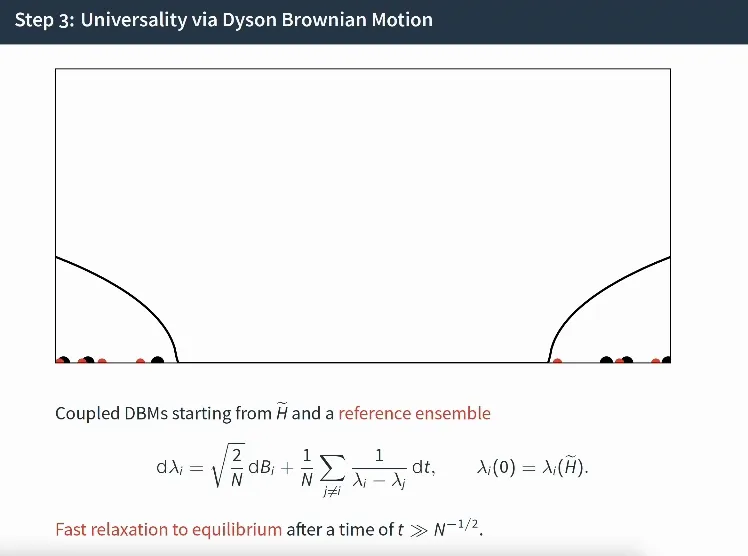Random matrices with slow correlation decay
László Erdős, Dominik Schröder
Forum Math. SigmaVol. 7 (2017)
Summary
We prove universality for a large class of random matrices with correlated entries. This very general result has been used numerous times, also in more applied research.Main result
The first main result asserts that the resolvent of an random matrix with correlated entries is well approximated by the unique solution to the Matrix Dyson Equation
The second main result is that the local eigenvalue statistics of are given by the universal Sine kernel statistics.
Proof
One key ingredient for the proof is the fast relaxation to equilibrium of Dyson Brownian motion:

Here there are two classes of particles (red and black) which initially are independent from each other. Then both particles are evolved using the same DBM and already after a short time the trajectories merge.
Abstract
We consider large random matrices with a general slowly decaying correlation among its entries. We prove universality of the local eigenvalue statistics and optimal local laws for the resolvent away from the spectral edges, generalizing the recent result of arXiv:1604.08188 to allow slow correlation decay and arbitrary expectation. The main novel tool is a systematic diagrammatic control of a multivariate cumulant expansion.
